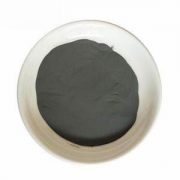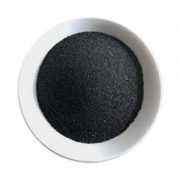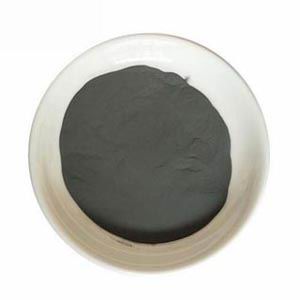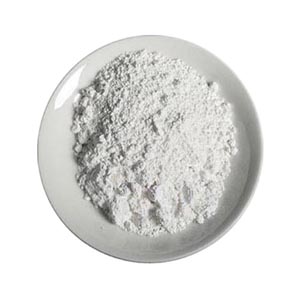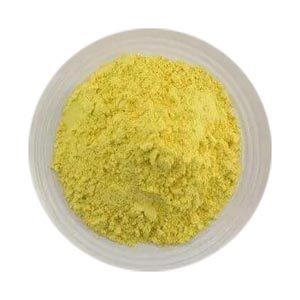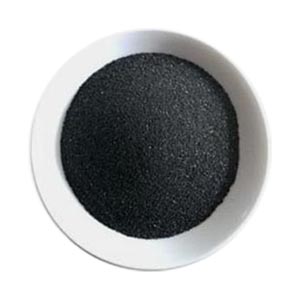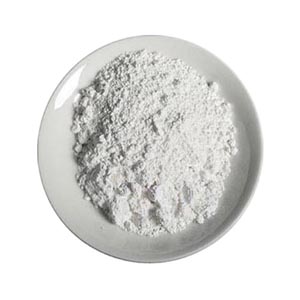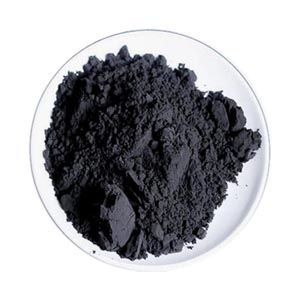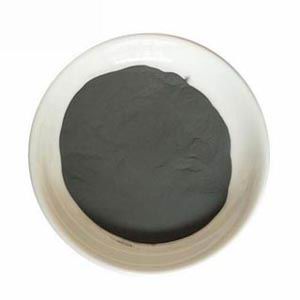Bismuth telluride
Other name: Bismuth(III) telluride, dibismuth tritelluride; bismuth(3+) telluride (2:3)
Type N: doped Selenium
Type P: doped Antimony
Grain size: -60 mesh, -100 mesh, -200 mesh, 325 mesh
Electrical conductivity: 1050/950
Thermal conductivity: 1.35/1.3
Seebeck coefficient: 220/280
Test temp.: 300K
- 描述
- About bismuth telluride
- Inquiry
CAS no. : 1304-82-1
EINECS no. : 215-135-2
Formula: Bi2Te3.
Molecular weight: 800.7608
Density at 25 °C(lit.) 7.642 g·cm−3
Melting point : 586°C
Bismuth Telluride is a narrow gap layered semiconductor with a trigonal unit cell. It is a semiconductor which, when alloyed with antimony or selenium is an efficient thermoelectric material for refrigeration or power generation. We have Bismuth Telluride doped P and N type in powder, rod form, also can slice into cubic granule or required size.
Applications:
Bi2Te3 used as Thermoelectric materials
Bismuth telluride crystals bear a remarkable quality. If, being prepared in a certain way semiconductor Bi2Te3crystals (they are also called «pellets») of the n- and р-types of conductivity are alternatively joined sequentially with each other by metal conductors, and this «package» is placed between two thermally conductive ceramic plates, then you get a device which is called the thermoelectric cooling module (TCM). When transmitting the direct electric current through the thermoelectric module the upper junctions of the «pellets» will become cool, while the lower – get warmer. As a result one ceramic plate is cooling the environment, while the opposite plate is the source of heating. But if the direct current is transmitted through the same device in the opposite direction, then the «hot» and «cold» sides shall change places.
Thermoelectric modules are used for the production of electricity through the direct transformation of heat into electricity. Electricity is produced, when heating the thermoelectric module connected to the electric circuit. The thermoelectric generating modules (TGMs) possess this property.
The unification of one or several TE modules and two heat exchangers of an aerial or liquid type, which are attached to the hot and cold sides of the modules into basic thermoelectric blocks (BTBs), allows to build a thermoelectric system of a given capacity.
Quality control of thermoelectric materials
The Hartman’s method of measuring thermoelectric parameters is used in order to control the quality of thermoelectric materials. When using this method to obtain precise calculations of the characteristics of thermoelectric efficiency it is necessary to apply corrections that are related to the thermal conduction of the lead and sound wires, with the thermal emission from the sample and wires, and also with the Joules heat, emitted in the lead wires. So far, when calculating the thermoelectric efficiency the registration of the corrections was not based on the solution of the task of thermal conduction in the system: «The sample – lead wires». The specialists of the «ADV-Engineering» LLC solved this problem in a one-dimensional approximation and on this basis worked out a method of a more correct way of measuring the thermoelectric efficiency of the sample.
1- sample, 2 – current distributing copper plate, 3 –constantan wire, 4 – current copper wire, 5 – sounding copper wire. Such a scheme allows to measure not only the thermoelectric efficiency, but also the thermo e.m.f., the electric conductivity and thermal conduction.
Thermoelectric properties of n-type crystals:
Zeebeck’s coefficient at 300K σ ≥ (140÷180)·10 -6V/K
Specific conductivity at 300К σ = (1300÷1700) Ocm -1·cm -1
Thermoelectric properties of p-type crystals:
Zeebeck’s coefficient at 300K σ ≥ (130÷170)·10 -6 V/K
Specific conductivity at 300К σ = (1400÷1800) Ohm -1·cm -1
Find
Experimenters tested bismuth telluride samples using X-rays from advanced SLAC Stanford synchrotron radiation sources and the Lawrence Berkeley National Laboratory advanced light source. When investigating their electronic properties, they found that they have the obvious characteristics of topological insulators and that the actual properties of bismuth telluride are better than their theoretical properties. Experiments show that bismuth telluride can withstand temperatures higher than theoretically predicted, which also means that the material is closer to what scientists imagine. This magical character may stem from unexpectedly poorly behaved electrons. The quantum spin of each electron corresponds to the motion of the electron. This is the quantum spin Hall effect. This adjustment is an important part of creating a spintronic device. The researchers explained that when you hit something, it usually disintegrates and may bounce back, but the quantum spin Hall effect means you can not reflect it back in exactly the opposite direction. The dramatic effect is the electronic flow without resistance, a voltage applied to a topological insulator, this special spin current will flow, and will not cause the material heat and dissipation.
Bismuth telluride - Used
Topological insulators are not conventional superconductors nor ultra-efficient power cords because they can carry very little current but pave the way for the paradigm shift in microchip development that will lead to new applications for spintronics , That is, the use of electronic spin to carry information. Moreover, bismuth telluride is very easy to produce and use in practical applications. The three-dimensional material can be manufactured using the existing proven semiconductor technology and is also easily doped so that its performance can be fairly easily tuned.
Bismuth telluride - chemical
Nature: the main periodic table group V, VI elements compound semiconductor. Triangle crystal, the original cell rhombohedral hexagonal, lattice constant 1.0473nm. By covalent bond, there is a certain ionic bond components. Bismuth telluride is an indirect bandgap semiconductor. The forbidden band width at room temperature is 0.145eV, the electron and hole mobility are 0.135 and 4.4 × 10-2m2 / (V · s), respectively, and the thermoelectric power factor is 1.6 × 10-3 / K. Bridgman method, the regional melting method, Czochralski method. For a good temperature difference material.
Bismuth telluride - toxin
For semiconductors, electronic freezing and power generation. Dogs, rabbits and mice exposed to bismuth telluride dust had lung reactions, gaining weight, and no changes in the activity of alkaline phosphatase in serum and organs in the bloodstream. The United States provides the allowable concentration in the atmosphere of 10mg / m3.

